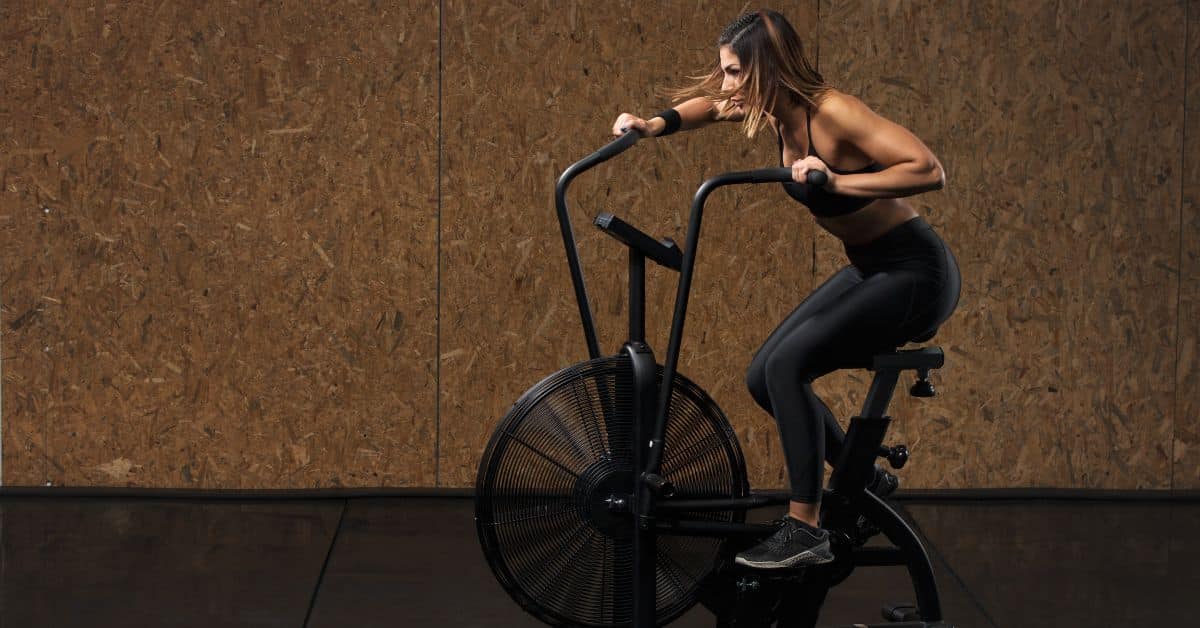HIIT (High-Intensity Interval Training) is a sort of functional training since it employs exercises that replicate daily motions and activities. These drills are intended to boost general fitness by increasing strength, power, endurance, and flexibility.
Table of Contents
ToggleHIIT exercises usually consist of brief bursts of intense activity followed by periods of rest or low-intensity activity, and may be performed with a variety of equipment or just by using bodyweight.
Comparatively speaking, it takes less time than regular aerobic exercises. As a result, it’s a fantastic alternative for those who are pressed for time yet still want to work out. In addition, HIIT exercises are simple to adapt to different fitness levels, making them suitable for individuals of all ages and abilities.
Start Building Your Dream Body Today
Ready to elevate your fitness game without falling into the trap of dull, repetitive routines that just don’t deliver? Imagine sculpting your ideal physique and boosting your health, all while still enjoying life’s pleasures, like those irresistible weekend getaways and your aunt’s legendary cheesecake. With our online fitness and nutrition coaching service, you don’t have to compromise. Dive into a personalized fitness journey that blends perfectly with your lifestyle, not against it. Book your completely free discovery consultation today, and take the first step towards a transformation that doesn’t require giving up the joys of life.

“I was skeptical about online fitness coaching, but Functional Body Savage completely changed my perspective. Vanja and Radomir’s personalized approach and attention to detail have helped me achieve goals I never thought possible. I’m stronger, more confident, and grateful for their guidance.”
Emily Thompson, San Francisco, CA
Learn More About Our Online Coaching ServiceQuick Summary
- High-Intensity Interval Training (HIIT) is a kind of cardio training in which high-intensity bursts of activity are alternated with periods of rest or active recovery.
- Functional training is a type of training that focuses on preparing the body for daily tasks through complex motions that target numerous muscle groups and enhance overall fitness.
- High-Intensity Functional Training (HIFT) is a workout that incorporates HIIT concepts with functional training activities.
What Is High-Intensity Interval Training(HIIT)?
High-intensity interval training (HIIT) is a form of cardio training that alternates periods of high-intensity exercise with periods of rest or active recovery. To increase cardiovascular fitness, burn calories and improve muscle tone, HIIT pushes the body to its limits [1].
While the low-intensity rest periods should be used to recover and prepare for the high-intensity interval that follows, the high-intensity exercises should be challenging enough to increase heart rate and respiration to levels near maximum [2].
Running, cycling, jumping jacks, burpees, and other activities are frequently used in HIIT. It may be done with or without equipment and can be tailored to various fitness levels. These bursts of activity normally last 20 seconds to a minute and are performed with utmost effort. Recovery times between these spurts of activity can be active or passive, and they normally span 30 seconds to two minutes.
This cycle of high-intensity action and recuperation is repeated numerous times, with the number of rounds and length of each round variable according to the individual’s fitness level and goals [3].
HIIT also has the ability to increase metabolism and promote weight reduction. Excess Post-Exercise Oxygen Consumption (EPOC), also known as the “afterburn” effect, is a result of the workout’s high intensity, which leads the body to continue burning calories after the session is completed. As a result, more calories are expended during the day, which eventually results in weight reduction [4].
HIIT has been demonstrated to increase lung function, insulin sensitivity, and cardiovascular health in addition to other aspects of general health [5].
What Is Functional Training?
Functional training is a type of training that focuses on preparing the body for daily tasks. It utilizes exercises that simulate real-life actions like carrying groceries, climbing stairs, or lifting up a child.
These drills, known as compound motions, frequently include the usage of numerous muscle groups, which increases overall fitness and functional capacity [6].
Exercises that target the core muscles (abs, back, and hips), which offer stability and support for the spine, are frequently included in functional training.
Planks, bridges, and bird-dogs are examples of such exercises.
Exercises that improve balance, coordination, and stability, such as single-leg deadlifts, lunges, and step-ups, are also included.
Bodyweight, resistance bands, kettlebells, and medicine balls are common pieces of equipment used in functional training [7].
Consider reading:
What Are the Similarities Between HIIT and Functional Training?
HIIT and functional training share a couple of similarities:
Mimic everyday movements
Sprinting and leaping are HIIT exercises that imitate the actions of real-world activities like running and jumping. Functional training activities also mimic common actions such as pushing, pulling, twisting, and bending.
Effectiveness
HIIT and functional training are efficient and effective methods to improve cardiovascular fitness, burn calories, and build lean muscle.
Use several muscle groups
Both HIIT and functional training routines engage numerous muscle groups in what are referred to as compound movements, which enhance overall fitness and functional ability.
Boost general health
HIIT has been demonstrated to increase lung function, insulin sensitivity, and cardiovascular health. Additionally beneficial to general health, functional training enhances balance, coordination, stability, and posture [8].
What Are the Differences Between HIIT and Functional Training?
HIIT and functional training also have several differences:
Goals
Functional training is more focused on strength, movement efficiency, and lowering the risk of injury whereas HIIT is more focused on cardiovascular fitness and fat burning.
If you’re a person carrying extra weight and in search of a treadmill designed to support higher weight limits, explore our guide on the top treadmills for users up to 300 lbs.
The intensity
Functional training may be less difficult but still challenging, allowing a person to execute exercises at a steady speed, but HIIT is noted for its high-intensity nature and needs high energy output.
The equipment
Treadmills, exercise bikes, and rowers are just a few examples of the specialized tools needed for HIIT. Contrarily, functional training sometimes just requires body weight or some resistance bands, making it suitable for people of all fitness levels.
If you personally ask me about the best HIIT equipment, I recommend air bikes for a few reasons. In case that interests you, check our guide about the best air bikes to find the one that suits your home gym the best.
The time frame
Functional training sessions can last up to an hour, whereas HIIT sessions are often shorter, lasting 20 to 30 minutes.
What Is High-Intensity Functional Training(HIFT)?
High-Intensity Functional Training (HIFT) is a type of functional training that incorporates both HIIT and functional activities. It is a workout that attempts to increase total fitness, such as strength, power, endurance, and flexibility.
It’s intended to simulate ordinary actions and tasks like pushing, pulling, twisting, and bending, but with an emphasis on high-intensity aerobic intervals.
HIFT exercises are generally 20-40 minutes long and are meant to push the body to its limits, testing both cardiovascular and physical endurance.
A HIFT session includes exercises that are meant to target numerous muscle groups and enhance overall functional capacity. Exercises for balance, coordination, and stability are also included, comparable to functional training [9].
HIIT vs HIFT: What Is the Difference?
The main difference between HIIT (High-Intensity Interval Training) and HIFT (High-Intensity Functional Training) is the type of exercises. Both HIIT and HIFT use high-intensity intervals.
Main goal of HIIT is improving cardiovascular fitness and burning fat, while HIFT is a full-body workout that combines high-intensity intervals with functional exercises with the goal of preparing the body for everyday activities, improving overall fitness, preventing injuries, and improving posture [10].
Also, several major differences between those types of training are:
Uni-Modal vs Multi-Modal
HIIT is a uni-modal type of training, a training program that predominantly concentrates on one form of exercise, such as weightlifting, cardio, or endurance training. A uni-modal weightlifting program, for example, would solely focus on movements like squats, deadlifts, and bench press, with little to no cardio or endurance work.
HIFT is a multi-modal type of training. Contrarily, multi-modal exercise refers to a synthesis of several forms of physical activity or training. A range of various exercises, including strength training, cardio, flexibility, and balancing drills, are included in this kind of workout program. Enhancing total fitness, including strength, power, endurance, and flexibility, is the aim of multi-modal exercise.
“Because the whole body is being used in high intensity functional training, the heart has to supply lots of different muscle groups with fuel over an extended period. In other words, your heart rate will increase and you’ll improve general fitness and body composition.” – Adam Sinicki, AKA The Bioneer, author of the Functional Fitness and Beyond
No Defined Rest Interval
Between the high-intensity work phases in high-intensity interval training (HIIT), there are designated rest intervals. The rest intervals can be passive or active and normally range from 30 seconds to 2 minutes. Active rest is distinguished from passive rest by the fact that the former involves continuing to perform exercises that are less strenuous but still difficult.
There are no set rest periods in High-Intensity Functional Training (HIFT). Between sets, the participant does workouts that are less strenuous during the active recovery period. Since there are no set rest periods in HIFT, the workout might be more difficult and intense since the participant must keep up a high level of intensity the entire time.
Some workouts called “Tabata” or “Giant set’ are structured so that all exercises are performed without rest, with the goal of pushing the body to its limits and testing cardiovascular and muscular endurance [11].
FAQs
What Type of Workout Is HIIT?
HIIT is a type of cardio workout. It consists of many rounds that alternate between several minutes of high-intensity exercises to considerably boost the heart rate to at least 80% of one’s maximal heart rate and short intervals of lower-intensity motions [12].
What Is Considered Functional Training?
Functional training is a type of workout grounded on the idea that exercises should mimic the movements that we do in everyday life, similar to lifting, carrying, and pushing.
Is It Ok to Only Do HIIT Workouts?
No, it isn’t ok to only do HIIT workouts. HIIT is an effective technique to boost cardiovascular fitness, burn calories, and build muscle, but doing it too often or for too long can lead to overuse injuries and burnout [13].
How to Make Your HIIT Workouts More Functional?
To make your HIIT workouts more functional, incorporate exercises that imitate everyday movements and work multiple muscle groups at once, like squats, lunges, deadlifts, push-ups, and rows.
To enhance functional strength, use only minimal equipment. Variate the intensity of balance and coordination exercises. Include core and plyometric workouts such as box jumps, jump squats, and burpees. Remember to properly warm up and cool down before and after your HIIT workout.
This will increase general fitness, lower the chance of injury, and improve performance in other sports and activities.
Start Building Your Dream Body Today
Ready to elevate your fitness game without falling into the trap of dull, repetitive routines that just don’t deliver? Imagine sculpting your ideal physique and boosting your health, all while still enjoying life’s pleasures, like those irresistible weekend getaways and your aunt’s legendary cheesecake. With our online fitness and nutrition coaching service, you don’t have to compromise. Dive into a personalized fitness journey that blends perfectly with your lifestyle, not against it. Book your completely free discovery consultation today, and take the first step towards a transformation that doesn’t require giving up the joys of life.

“I was skeptical about online fitness coaching, but Functional Body Savage completely changed my perspective. Vanja and Radomir’s personalized approach and attention to detail have helped me achieve goals I never thought possible. I’m stronger, more confident, and grateful for their guidance.”
Emily Thompson, San Francisco, CA
Learn More About Our Online Coaching ServiceReferences:
- https://www.ncbi.nlm.nih.gov/pmc/articles/PMC2991639/
- https://www.ncbi.nlm.nih.gov/pmc/articles/PMC6760312/
- https://pubmed.ncbi.nlm.nih.gov/31062536/
- https://www.ncbi.nlm.nih.gov/pmc/articles/PMC5685083/
- https://onlinelibrary.wiley.com/doi/abs/10.1111/apha.13009
- https://www.frontiersin.org/articles/10.3389/fphys.2021.738878/full
- https://pubmed.ncbi.nlm.nih.gov/27385549/
- https://www.ncbi.nlm.nih.gov/pmc/articles/PMC8294064/
- https://www.ncbi.nlm.nih.gov/pmc/articles/PMC6162410/
- https://pubmed.ncbi.nlm.nih.gov/26094701/
- https://pubmed.ncbi.nlm.nih.gov/31004287/
- https://www.health.harvard.edu/exercise-and-fitness/high-intensity-exercise-and-your-heart
- https://www.sciencedaily.com/releases/2019/04/190409083239.htm





